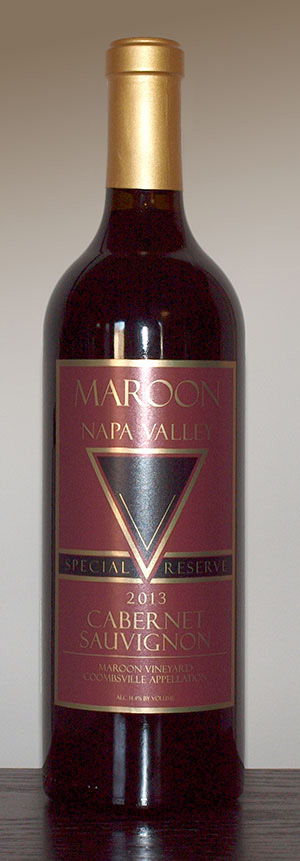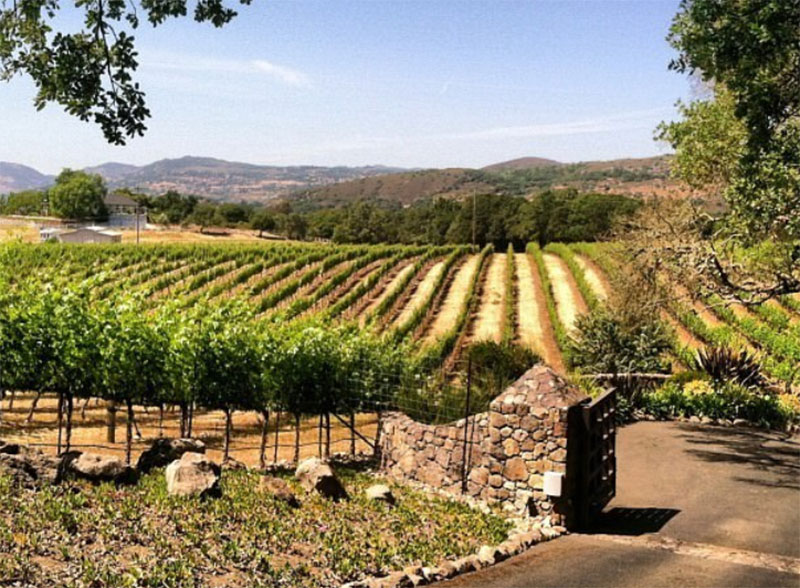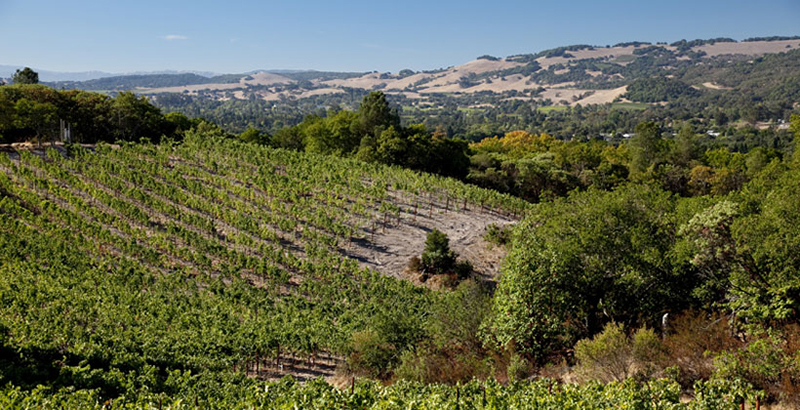 As a reviewer and source of reliable information, I am supposed to be as objective and unbiased as possible. But not today. Keenan wines have long been some of my favorites.
As a reviewer and source of reliable information, I am supposed to be as objective and unbiased as possible. But not today. Keenan wines have long been some of my favorites.
After serving in World War II, Robert Keenan worked as an insurance broker and also invested in commercial real estate. He had been a wine enthusiast for years, including owning a significant collection of Bordeaux wines, and finally decided to have a go at winemaking. Certain that mountain-side vineyards in Napa Valley could produce world class wines, in 1974 Keenan purchased 180 acres (of which 48 are under vine) in the Spring Mountain District at an elevation of 1700 feet. Located on the eastern slope of the Mayacamas mountain range, (Spring Mountain District was declared an American Vineyard Appellation (AVA) in 1993.) The low-vigor soils unique to the region were known to create a stressful environment for vine growth, setting up perfect conditions to encourage vineyards planted on the steep rocky mountainsides to produce wines of great concentration, structure, and pure varietal flavors.
The original acreage Keenan acquired included the crumbling Peter Conradi Winery, founded in the late 19th century, and one of the first pioneering properties established on Spring Mountain. Conradi and his family moved here in 1890, planted grapes a year later, and built a simple wooden winery which he later replaced with a winery made of stone in 1904. Conradi had originally planted the vineyards to Zinfandel and Syrah, but those declined when the property was abandoned during Prohibition, and by the time Keenan arrived in 1974, none of the original vineyards were producing. Keenan cleared the estate of tree stumps and rocks, extended the vineyard acreage, and replanted the property to Cabernet Sauvignon and Chardonnay. He built a new winery, using the existing stone walls from the old Conradi building for the barrel room, and brought in Keenan Winery’s first harvest there in 1977.
Like many such operations, the winery is a collaborative affair. Keenan’s son, Michael, after running a residential home remodeling business for years, took over leadership of the estate in 1998 when his father was ready to retire and was looking for a buyer. Even as a young man, Michael was eager to learn about winemaking and honed his winemaking skills under the leadership of his father, as well as renowned winemaker Joe Cafaro. Michael Keenan now works in concert with General Manager Matt Gardner, Cellar Master Aristeo Garcia Martinez, and Assistant Cellar Master Ricardo Segura. Matt has been with the estate since 1995. Together, they establish winemaking protocols, aging, and the finished style of Keenan wines.

The Keenan winery.
In the tasting room and winery itself, Michael’s wife and Artistic Director Jennifer Keenan ensures that visitors enjoy the full experience of the winery through her creative and playful interior design and sumptuous event design. She is responsible for the classic Keenan image and created the unique label design for the brand.
The Keenan’s son, Reilly, predictably has been immersed in wine culture from a very early age. He became a member of the team at age sixteen, and works during harvest, hosts tastings for visitors on the estate, pours for wine events, and is the dedicated point person for many consumer and trade events.
Under Michael Keenan’s supervision, the vineyards have been systematically replanted to increase grape quality. The program focused on increasing soil health throughout the vineyards, using superior farming methods combined with organic compost and cover crops. Matching each varietal clone to its optimum location, every acre is sustainably farmed and planted with specially selected rootstock. In addition, close attention has been given to row orientation on each site, combined with efficient irrigation. The winemaking team takes a conservative approach, to encourage the varietal flavors to stand out in each bottle of wine.

The estate vineyard.
Keenan Winery produces three wines exclusively from grapes grown on the Spring Mountain Estate: Chardonnay, Cabernet Sauvignon Reserve, Cabernet Franc, plus a Merlot Reserve from the Mailbox Vineyard. Keenan also offers wines produced from estate fruit blended with grapes grown in carefully selected Napa Valley vineyards: Cabernet Sauvignon, Zinfandel, and the Mernet Reserve, which is a proprietary blend of Cabernet Sauvignon, Merlot, and Cabernet Franc. The Summer Blend, an annual spring release, is composed of mostly Chardonnay and blended with small amounts of Viognier and Albarino.
Keenan Winery Cabernet Sauvignon Reserve Spring Mountain District 2016
This wine commemorates Keenan’s 40th vintage. It was produced exclusively from grapes grown on the Keenan Estate located in Napa Valley’s Spring Mountain District, 31% each of the Cabernet Sauvignon clones 337, 7, and 412 along with 7% Cabernet Franc.
It is opaque, dark purple, with moderate aromas of dark fruit, cassis, prunes, and a hint of menthol and earth. The rich, full body sports lip-smacking flavors of those dark fruits and a little cedar, all supported by bracing tannins and just the right amount of acidity. This wine should reward cellaring, but I like my California Cabs young, big, and strapping, so that’s the way I drink them. Hell, I like tannins. This wine is undoubtedly expensive, but worth it. 900 cases were made, and the ABV is 14.3%.
Back to blog posts: winervana.com/blog/


 Dan Duckhorn
Dan Duckhorn Margaret Duckhorn
Margaret Duckhorn



 Duckhorn’s current winemaker, Renee Ary, has numerous vineyard blocks to choose from, each offering markedly different flavor profiles. She strives to understand the needs and opportunities presented by each specific
Duckhorn’s current winemaker, Renee Ary, has numerous vineyard blocks to choose from, each offering markedly different flavor profiles. She strives to understand the needs and opportunities presented by each specific 


 George Bursick grew up in Sonoma County, where many of his friends’ families were grape growers and he was exposed to vineyards and winemaking early on. After attending
George Bursick grew up in Sonoma County, where many of his friends’ families were grape growers and he was exposed to vineyards and winemaking early on. After attending 








 both attended
both attended 
 and I had always dreamed of being in the wine business,” Wulff reminisced.
and I had always dreamed of being in the wine business,” Wulff reminisced.


 There he purchased the
There he purchased the 

 Arrowood fulfilled his ongoing obligations as executive vice president/winemaster at Chateau St. Jean. In April 1990 he joined Alis to devote himself full-time to Arrowood Winery.
Arrowood fulfilled his ongoing obligations as executive vice president/winemaster at Chateau St. Jean. In April 1990 he joined Alis to devote himself full-time to Arrowood Winery.








